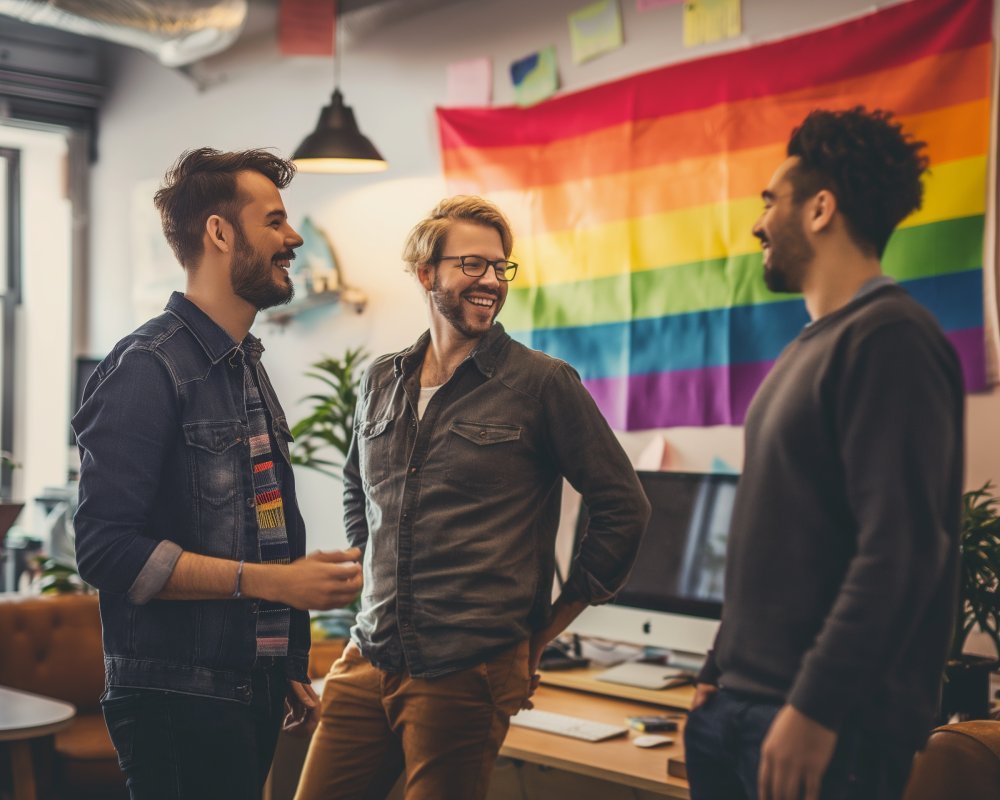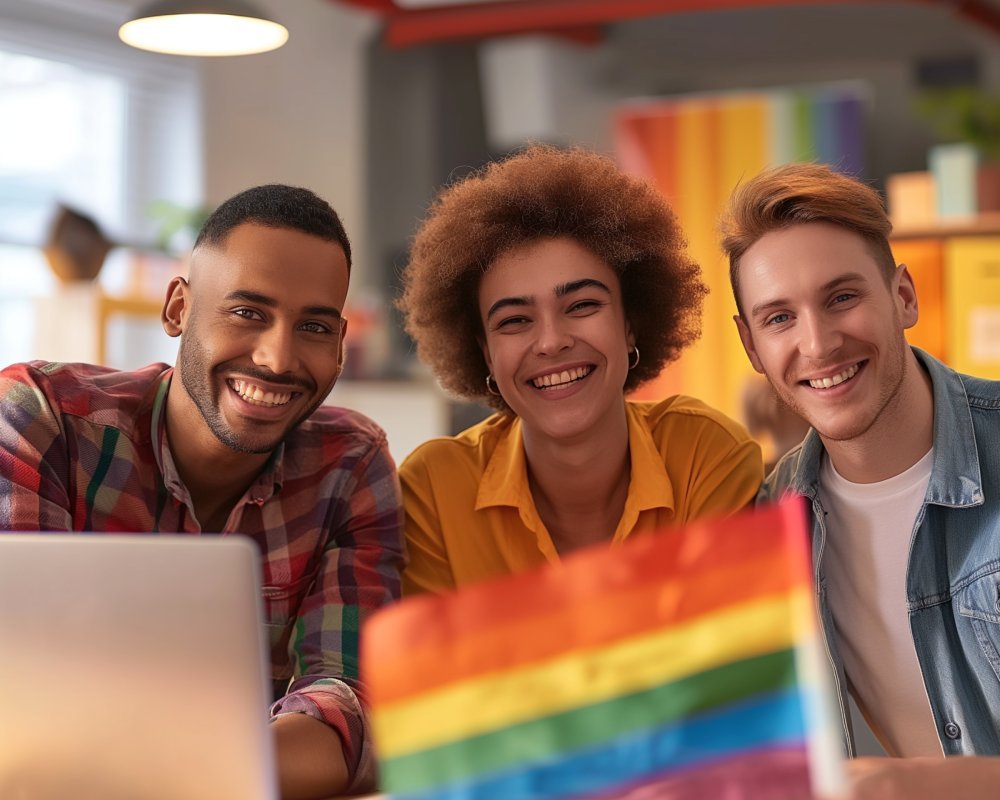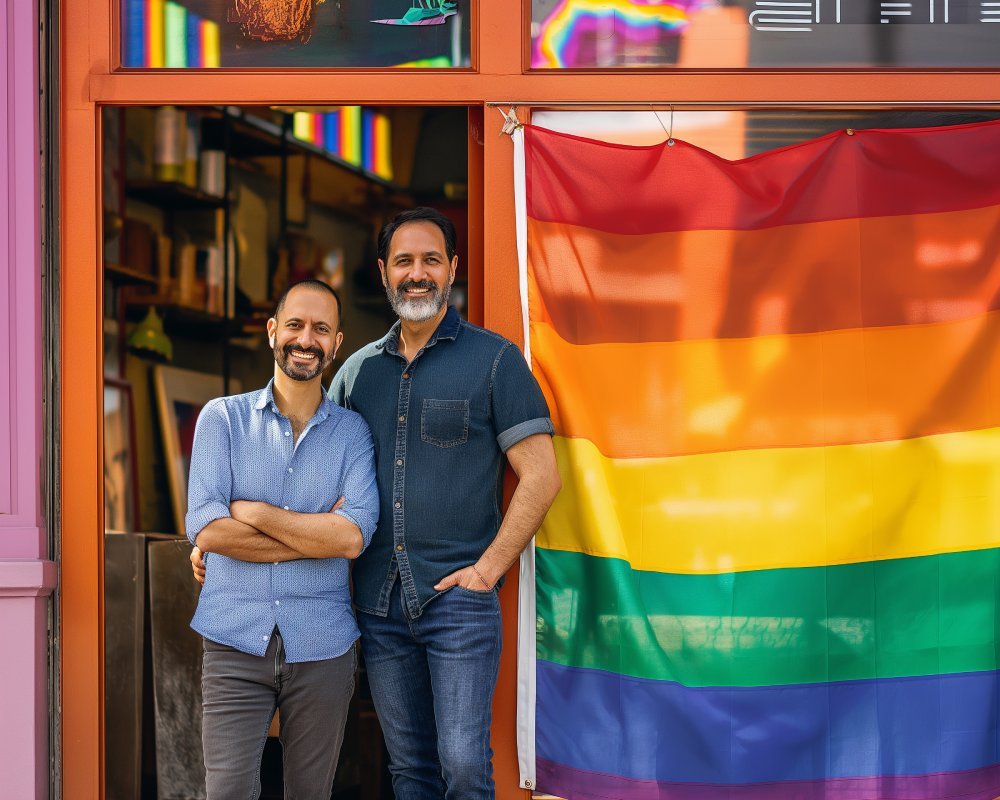
Historical Gay Bars That Shaped LGBTQ+ Culture – The history of gay bars has been entwined with the broader arc of LGBTQ+ rights and culture. These spaces have provided a refuge, a meeting ground, and a platform for activism, allowing the LGBTQ+ community to flourish. While some bars have not survived the test of time, their legacy continues to influence the evolution of LGBTQ+ culture today. This exploration delves into some of the most influential historical gay bars and how they have shaped LGBTQ+ culture.
The Birth of Safe Havens: Early Gay Bars
In the early 20th century, gay bars emerged as critical spaces for social and political interactions among LGBTQ+ individuals. These establishments allowed patrons to express themselves freely in a society that largely criminalized homosexuality. Many bars adopted code language and signs to discreetly identify themselves to the community while avoiding scrutiny from law enforcement. These early bars laid the foundation for future movements, where the camaraderie and solidarity fostered within their walls became the bedrock for organized LGBTQ+ activism. Indeed, understanding the significance of these bars provides insight into the roots of modern gay culture and how it has shaped societal changes over the years.

Stonewall Inn: A Catalyst for Change
No discussion on historical gay bars is complete without highlighting the Stonewall Inn. Located in New York City, the Stonewall Inn became synonymous with the LGBTQ+ rights movement following the watershed events of June 28, 1969. The resistance against a police raid sparked the Stonewall Riots, marking a monumental shift toward LGBTQ+ rights. This iconic bar is often celebrated for galvanizing a global movement, connecting millions through a shared vision of equality. The Stonewall Riots and the subsequent annual Pride marches remind us of how the struggle for equality has been fueled by community spaces like Stonewall, which have become emblematic of resilience and resistance.
The Importance of Police Resistance
The Stonewall Riots emphasized the crucial role these bars played as sanctuaries where patrons could resist systemic oppression. The LGBTQ+ Community recognized Stonewall as a symbol of thriving audacity, paving the way for broader acceptance and civil rights progressions. Bands of LGBTQ+ individuals coming together formed a powerful opposition against the forces of discrimination. This pivotal moment signifies a universal demand for acceptance, underscoring the determination to preserve community-driven spaces that nurture identity, belonging, and advocacy.
Advertisement · Scroll to continue
Recommended
Black Cat Tavern: A Milestone in LGBTQ+ Activism
Before Stonewall, there was the Black Cat Tavern. Situated in Los Angeles, the Black Cat made history when patrons resisted a police raid on New Year’s Eve in 1967. This raid and the ensuing protest served as an early demonstration of collective resistance within the LGBTQ+ community. Following the event, LGBTQ+ activists formed organizations like PRIDE and magazine publications which chronicled LGBTQ+ issues. This legacy showcases the importance of LGBTQ+ bars not only as social venues but as mobilizing forces for change. The Black Cat’s historical relevance as a gay bar that shaped LGBTQ+ culture demonstrates its critical role in laying the groundwork for organized queer activism.
From Protest to Progress
The events at the Black Cat reflected the burgeoning desire for legal and social reform within the LGBTQ+ community. This communal response to law enforcement abuses highlighted the role of gay bars as nexuses for strategic activism, effectively bridging gaps between diverse segments of the queer community. The Black Cat’s place in history reinforces the significance of sharing our stories to preserve the collective fight for rights, celebrating gains that solely emanate from spots renowned for their adventurous spirit and unyielding solidarity.

Compton’s Cafeteria Riot: A Forgotten Legacy
While lesser known, the Compton’s Cafeteria Riot in San Francisco represents a critical chapter in LGBTQ+ history. Occurring in 1966, this uprising was one of the first to focus on transgender rights, underscoring the importance of intersectionality in LGBTQ+ activism. At a time when transgender individuals faced frequent discrimination, Compton’s Cafeteria served as a haven, where trans individuals could find refuge and community support. This venue remains a historical touchpoint for its role in exemplifying the diverse needs of LGBTQ+ spaces that welcome all identities, contributing to the formation of a more inclusive culture that embraces the spectrum of experiences within the LGBTQ+ community.
Highlighting Intersectionality
Compton’s Cafeteria Riot serves as a reminder of the significance of recognizing our diverse identities within the LGBTQ+ community. The cross-section of activism and unity upheld by this episode showcases the necessity of ensuring inclusive and representative safe spaces. Exploring this often-overlooked chapter in history emphasizes unity amidst diversity, fortifying bonds beyond demographics and affirming the importance of LGBTQ+ solidarity that respects and champions shared fights for equality through collective strength.
Around the Globe: Gay Bars in Cultural Contexts
While American venues like Stonewall and the Black Cat embody pivotal moments in LGBTQ+ history, gay bars worldwide have similarly spurred seismic social change. In the UK, London’s Admiral Duncan Pub has epitomized gay resilience, celebrating LGBTQ+ pride in the face of adversities, such as the 1999 bombing. Across the world in Australia, venues like the Imperial Hotel have championed inclusivity, welcoming the drag culture into mainstream consciousness. Globally, these historical gay bars that shaped LGBTQ+ culture underscore the diverse narratives that have driven cultural progressions, ultimately leading to greater acceptance and understanding within societies across continental bounds.
Global Impact
Considering the historical significance of international gay bars highlights the shared aspirations of LGBTQ+ communities worldwide. While echoing local traditions and challenges, their contributions transcend borders, reflecting universal quests for equality and representation. These spaces promote personal expression, advocating for inclusive practices that embrace cultural intricacies while celebrating identity diversity. These experiences reflect the synergy between LGBTQ+ voices and global movements that prioritize authentic representation and connection.

Advertisement · Scroll to continue
Recommended
Bars as Cultural Hubs: The Rise of Modern Gay Venues
Today, gay bars continue to serve as vital hubs for cultural exchange and expression within the LGBTQ+ community. These modern venues often host themed nights, drag performances, and educational events, fostering creativity while spreading awareness and promoting inclusiveness. Building on the groundbreaking work of historical gay bars that shaped LGBTQ+ culture, current establishments embrace technological advancements and evolving identities to maintain relevance and responsiveness to community needs. They also act as conduits connecting the past’s lessons and ongoing conversations within the LGBTQ+ landscape, championing progress that remains deeply rooted in earlier narratives of empowerment and advocacy.
Championing Culture and Creativity
Modern gay bars function as spaces where creativity flourishes, transcending normative parameters to welcome vibrant expressions celebrated through art, music, fashion, and performance. These cultural hubs epitomize safe environments for experimenting and rejoicing in identity pluralities, crafting communal experiences that seamlessly intertwine creativity with advocacy. By extracting the essence of their historical predecessors, they continue to drive conversations and innovations, forging cultures steeped in courageous exploration and dynamic representations.
The Evolution of Gay Bars: Embracing Inclusivity
In a transformative era, gay bars are evolving to embrace a broader conceptualization of inclusivity. Once predominantly focused on cisgender gay men, more contemporary venues now actively welcome lesbians, transgender individuals, and individuals identifying across the spectrum of LGBTQ+ and beyond. The evolution underscores a recognition that these spaces must adapt to societal changes by empowering diversity while unifying communities across multiple layers of gender and sexual orientation. This progression reflects the intrinsic power of collective allyship, urging everyone to participate in historical narratives and enrich cultural experiences through shared wisdom and inclusion-focused dialogue.

Benefits of Historical Gay Bars: Sustaining LGBTQ+ Culture
The enduring legacy of historical gay bars that shaped LGBTQ+ culture is palpable in contemporary society. They serve as reminders of the battles fought by previous generations, inspiring renewed activism among today’s community members. By reflecting on these establishments’ contributions, newer generations gain invaluable insights into the struggles, resilience, and triumphs that have defined LGBTQ+ identities throughout history. The benefits of understanding and preserving these narratives manifest through expressions of gratitude, solidarity, and inspiration, fueling the fight for continued progress and underscoring the necessity of cultural connections to face future challenges with renewed hope and determination.
Cherishing Our Legacy: The Future of LGBTQ+ Spaces
As society rapidly transforms, discussions on the significance of LGBTQ+ bars prompt questions around the preservation and regeneration of safe spaces for future generations. Emphasizing dialogue around issues of gentrification, commercial viability, and digital alternatives shape the conversation context. While acknowledging societal shifts in acceptance and technology, LGBTQ+ venues must remain dedicated to safeguarding offline havens of empowerment and belonging. An exploration of historical gay bars that shaped LGBTQ+ culture necessitates fertile ground for imagining an inclusive future with spaces that embrace history, innovation, and resilience.
The continued celebration of these spaces lies in recognizing their potential as incubators for community resilience and harmony, channeling collective effort towards imaginative solutions for sustaining LGBTQ+ cultural identities in evolving social landscapes. Empowered by our intricate history, these engagements emphasize dynamic processes of change, setting foundations for tomorrow’s aspirations and reconfiguring paradigms of inclusivity and equity for generations to come. Historical gay bars that shaped LGBTQ+ culture prove that intertwined legacies breathe life into impressions of enduring solidarity, illustrating the importance of creating holistic structures for future LGBTQ+ narratives.
Advertisement · Scroll to continue

More Recommended
What Are the Best Gay-Friendly Travel Destinations?
What Are the Best Gay-Friendly Travel Destinations? – Traveling as a part of the LGBTQ+ [...]
Shrimping Meaning Slang LGBT: What Shrimping Means?
Shrimping Meaning Slang LGBT: What Shrimping Means? – Shrimping, in LGBTQ+ slang, refers to the [...]
LGBTBE Certification
Unlocking Opportunities: A Comprehensive Guide to LGBTBE Certification In today’s competitive business landscape, diversity and [...]
How to Position Your Gay-Owned Business in a Competitive Market
How to Position Your Gay-Owned Business in a Competitive Market – In today’s competitive market, [...]
What are examples of DEI jobs?
What are examples of DEI jobs? – In today’s rapidly evolving workplace landscape, diversity, equity, [...]
Best LGBTQ+ Film Festivals for Travelers
Best LGBTQ+ Film Festivals for Travelers – Exploring the world through the lens of film [...]
From Taboo to Trend: The Evolution of Gay Advertising
From Taboo to Trend: The Evolution of Gay Advertising – Advertising has always played a [...]
Why Are Gay Role Models Important for Youth?
Why Are Gay Role Models Important for Youth? – In an increasingly interconnected and rapidly [...]
What Are the Signs of a Toxic Gay Relationship?
What Are the Signs of a Toxic Gay Relationship? – Toxic relationships can be damaging [...]